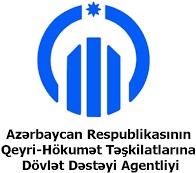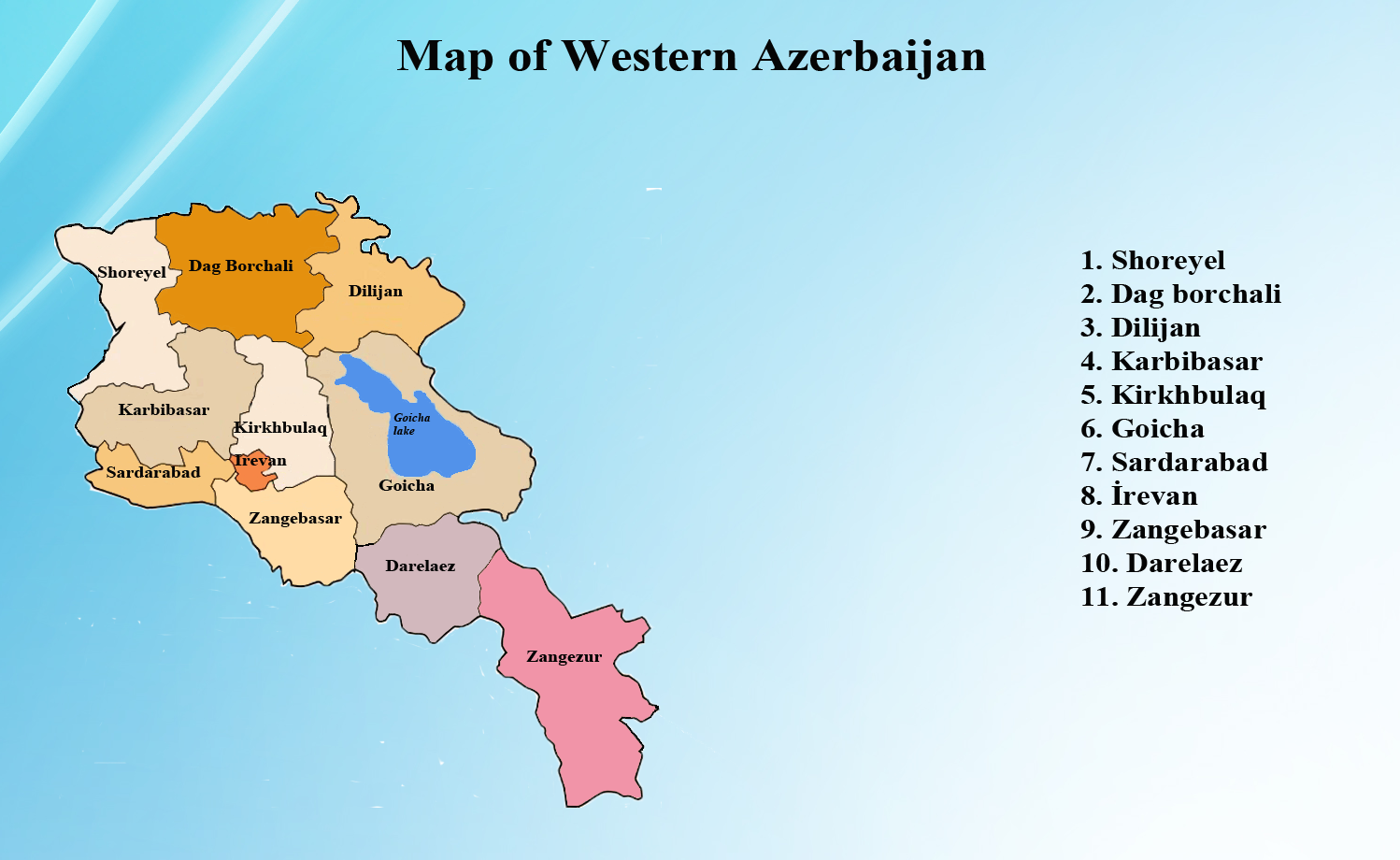Zangibasar District – It is one of the districts located in the territory of Western Azerbaijan (now the Republic of Armenia). It is one of the largest districts within the Iravan governorate.
The district derived its name from the Zangichay River. The Zangichay River traverses the western outskirts of Iravan city, meanders through the Aghri Valley (renamed Ararat Plain), and eventually converges with the Araz River in the Zangibasar district. Azerbaijani villages once thrived on both banks of the Zangichay within the Aghri Valley. However, during the repressive era of the 1930s, a significant portion of the population residing in the villages along the Araz River in the Zangibasar district relocated to Türkiye.
Geography
The Zangichay River, a tributary of the Araz River, originates from Lake Goycha (now Sevan) and meanders along the southwestern slopes of the Aghmangan (Gegham) mountains. It then traverses a deep gorge and enters the Iravan (Middle Araz) plain at an elevation ranging from 1000 to 1200 meters above sea level. Zangibasar district encompassed the plain extending from the point where the mountainous region meets the plain to the southwest, reaching up to the left bank of the Araz River. During the spring and autumn months of the year, the Zangichay River flooded the plain area around it, which led to the nomenclature ‘Zangibasar,’ meaning ‘the area covered by the floodwaters of Zangichay’. One of the Azerbaijani interpretations of the term ‘basmaq’ relates to ‘flooding’. Additionally, the geographical name “Zengi” is derived from the name of one of the Turkic tribes. The borders of Zangibasar district extended to the administrative territory of Iravan city in the north, Gamarli (now Artashat) in the southeast, and Echmiadzin (Uchkilsa) districts in the southwest. To the south, the district was demarcated by the Araz River, which also marked the boundary between the district and the territory of Türkiye.
History
Zangibasar (Masis) was one of the largest regions in Armenia and was established as an administrative district in 1938. In 1948, due to Stalin’s decision, our compatriots were forcibly deported from Armenia to the territory of the Azerbaijan SSR. Nevertheless, in the 1960s, some of these deported individuals managed to return to their homeland.
However, in late November and early December of 1988, Azerbaijanis were forcibly deported from the Zangibasar region, as well as from the entire territory of Armenia, and tragically subjected to mass massacres.
In the Zangibasar region, Armenians resided in only four out of the 37 villages: Azadashen, Kalaley, Yenija, and Jalilabad. The Armenian population commenced settling in Ulukhanli (Masis), the central town of the Zangibasar district, in the year 1950. This demographic shift was precipitated by Armenians occupying the residences of Azerbaijani citizens who had been forcibly displaced from Ulukhanli during the years 1948-1949.
The village of Goykumbat, situated on the right bank of the Zangichay River, was home to both Azerbaijanis and Armenians who coexisted together. Within this village, Armenians had taken over the homes of certain Azerbaijanis who had been forcibly deported from the village after 1918.
The list of 37 villages of Zangibasar administrative district is given below:
- Chobankara
- Chollu Mehmandar
- Rahimabad
- Garagishlag
- Zahmat (Khachaparag or Hachaparag)
- Azadashen
- Goykumbat
- Jafarabad
- Damirchi Shollu
- Boyuk Shollu
- Yukhari Nejili
- Ashaghi Nejili
- Sarvanlar
- Ulukhanli
- Aghhamzali
- Ranjbar
- Sarijalar
- Seyidkend
- Habilkend
- Reyhanli
- Gulujan
- Hajihasan houses
- Ilkhi Gorughu
- Orujlular
- Kalaley (Kalara)
- Zangilar (Donuzyeyan)
- Hajiellaz
- Aghjagishlag
- Arbat
- Kharratli
- Jabachili
- Tazakend
- Garadaghli (subsequently, it was incorporated into the Gamarli district)
- Yenija
- Kharaba Kolani
- Hasanli (A village built after the destruction of Ilkhi Gorughu village)
- Charvakh (subsequently, it was incorporated into the administrative area of Iravan city)
Population
The population of Zangibasar district numbered in the tens of thousands when the forced relocation commenced in 1948. However, the number of people who managed to return to Zangibasar after 1958-1960 stood at 29,860 individuals as of November 1988. It’s worth noting that this figure may have been significantly higher. For instance, in 1980, there were 519 students enrolled in the secondary school located in Yukhari Nejili village. Moreover, by 1988, the Zangibasar district had expanded to encompass 32 secondary schools. Consequently, the population of a district boasting 32 secondary schools should have exceeded 30,000 residents. Undoubtedly, Armenians deliberately understated the number of Azerbaijanis in the population census.
Culture
Russian schools were established in Ulukhanli village of Zangibasar district in 1880 and in Chobankara village in 1890. These schools were referred to as “shkula” at the time. Notably, in 1887, the renowned writer Jalil Mammadguluzade commenced his first teaching role at the school in Ulukhanli village.
Mammad Gaziyev from the city of Iravan (most likely, the grandfather of Mammad Gaziyev, a doctor of historical sciences and professor at Azerbaijan University of Languages), Vedili Shamidi Bey, and other individuals served as directors of the Ulukhanli Russian school. During the early years of the 20th century, one of the teachers at the Ulukhanli Russian school was Mammadjafar, originally from Iran.
Economy
The primary occupation of the population in Zangibasar is agriculture, encompassing activities such as farming, horticulture, and animal husbandry. The residents of Zangibasar are known for their strong work ethic and dedication to their agricultural pursuits.
Source
- Aziz Alakbarli, “Ancient Turkic-Oghuz homeland “Armenia”” (“Qədim türk-oğuz yurdu “Ermənistan”), Baku, “Sabah”, 1994.
- “Toponyms of Turkic origin in Western Azerbaijan” (“Qərbi Azərbaycanın türk mənşəli toponimləri”). Author: I. M. Bayramov; Editors: B. A. Budagov, H. I. Mirzayev, S. A. Mammadov. Baku: “Elm” publishing house, 2002, 696 pages.
- Habib Rahimoglu. “Indelible names, incurable wounds” (“Silinməz adlar, sağalmaz yaralar”) , Baku, “Azernashr”, 1997.
- B. A. Budagov, G. A. Qeybullayev. “Explanatory dictionary of toponyms of Azerbaijani origin in Armenia” (“Ermənistanda Azərbaycan mənşəli toponimlərin izahlı lüğəti”). Baku, “Oguz eli”, 1998.
- “Historical geography of Azerbaijanis living in Armenia” (“Ermənistan azərbaycanlılarının tarixi coğrafiyası”), Baku, “Ganjlik”, 1995.




